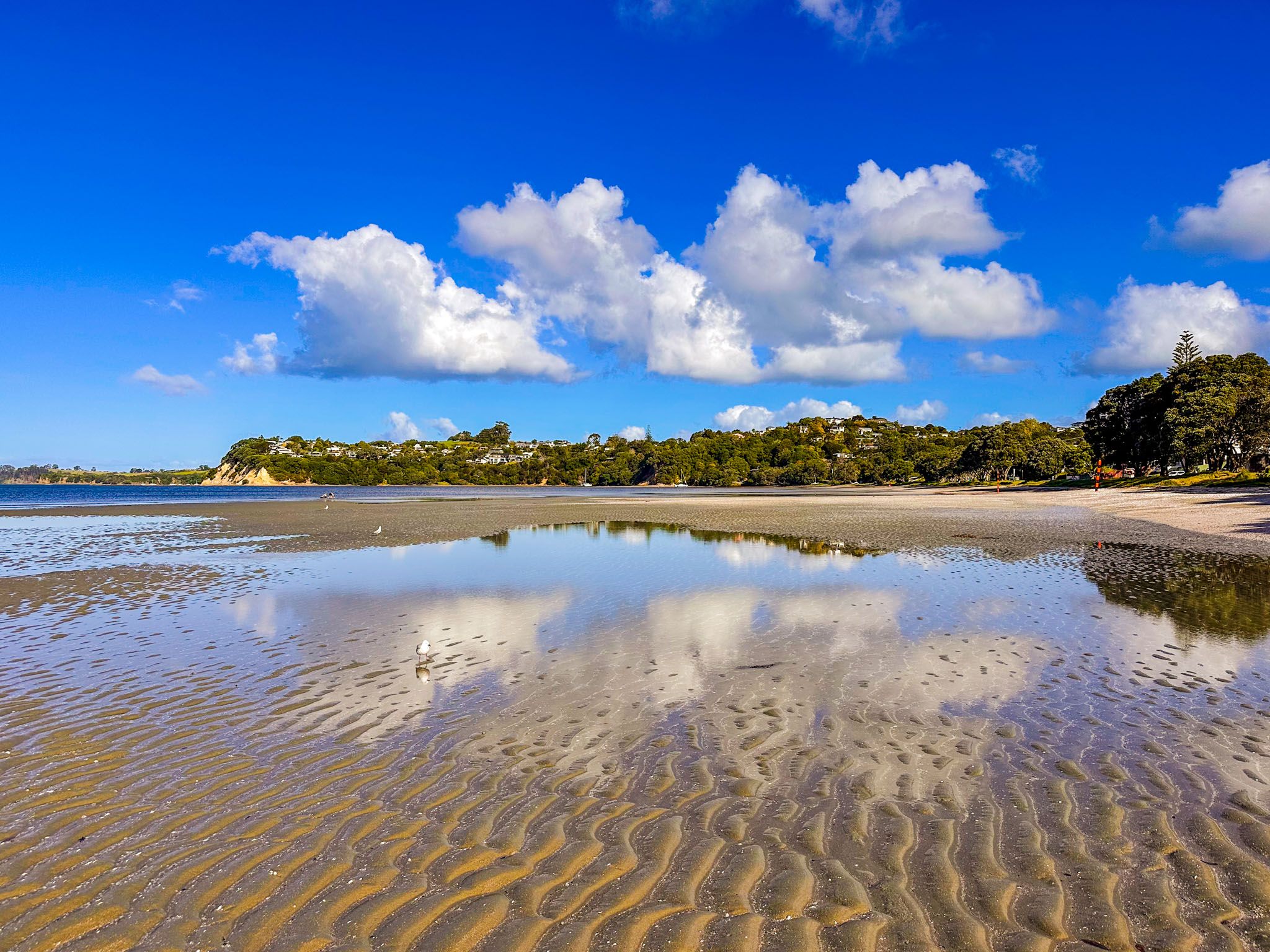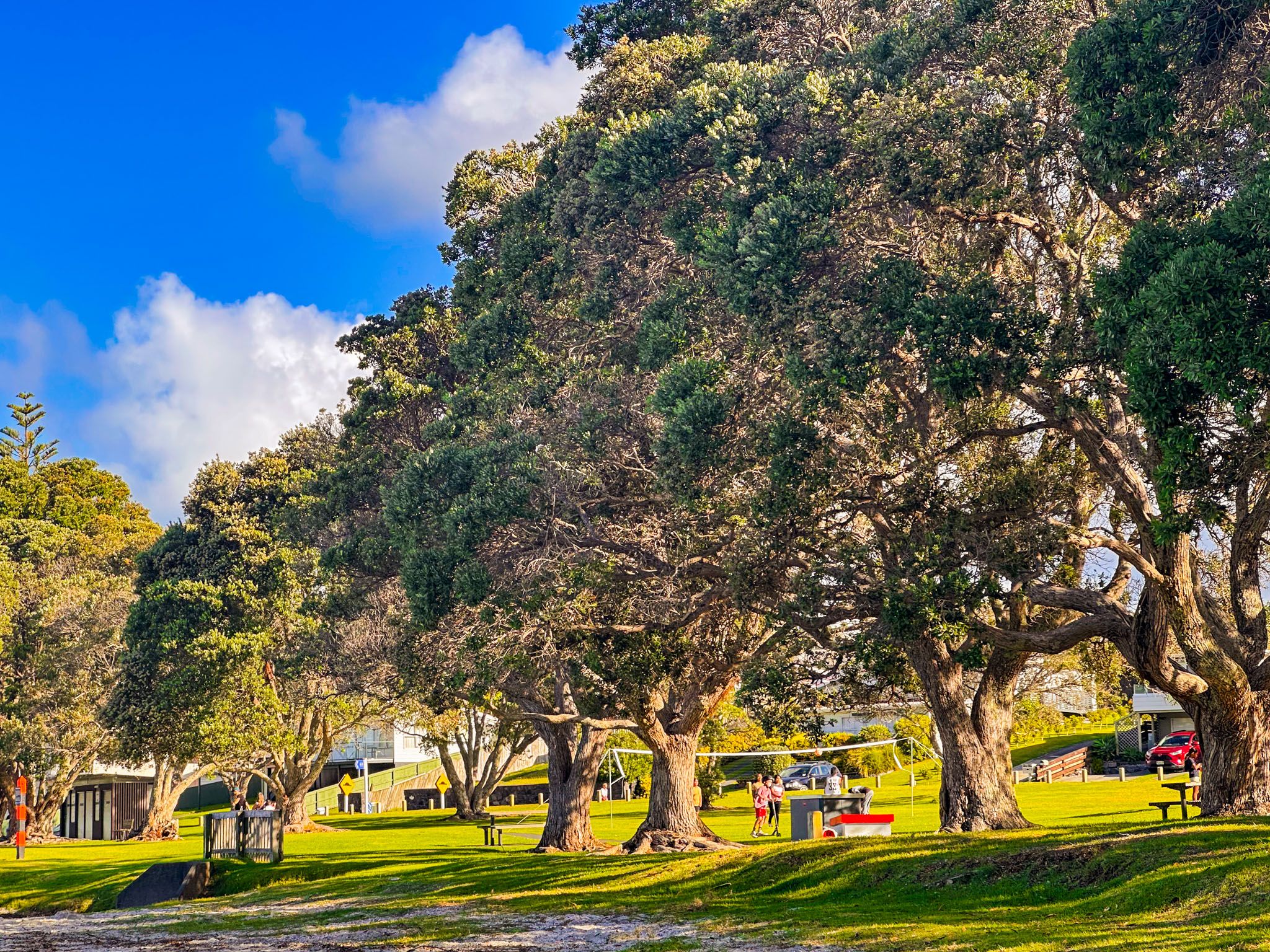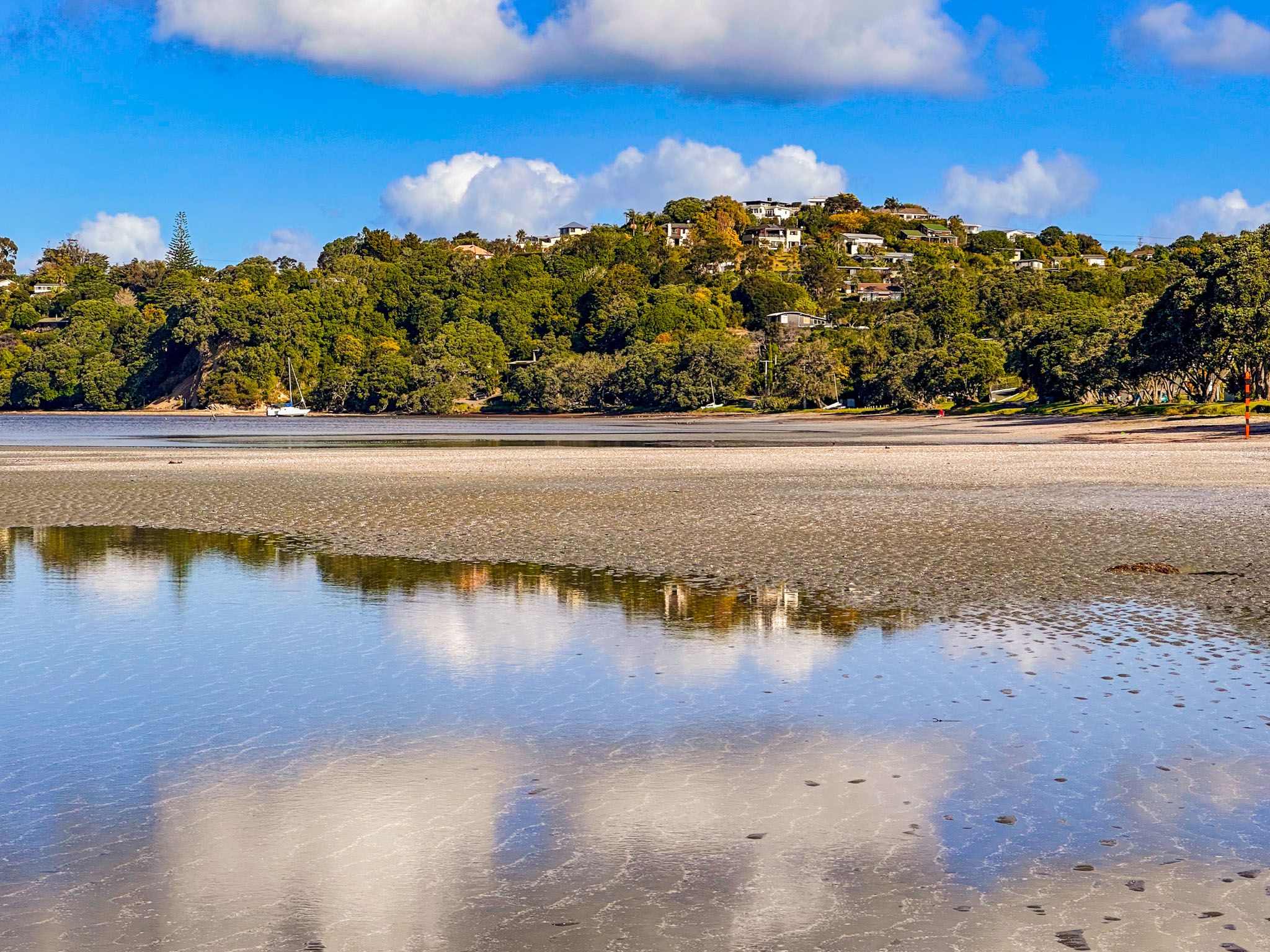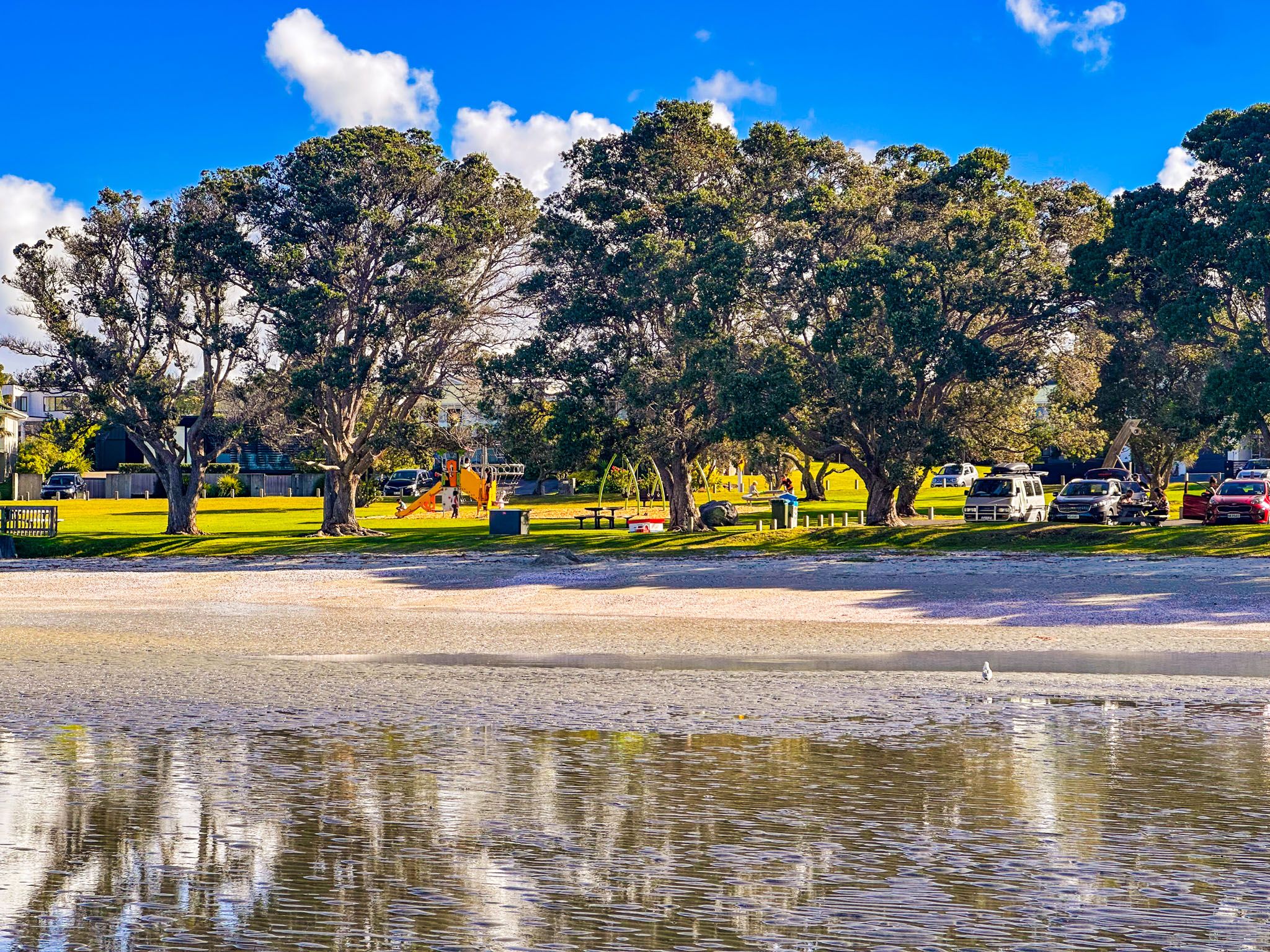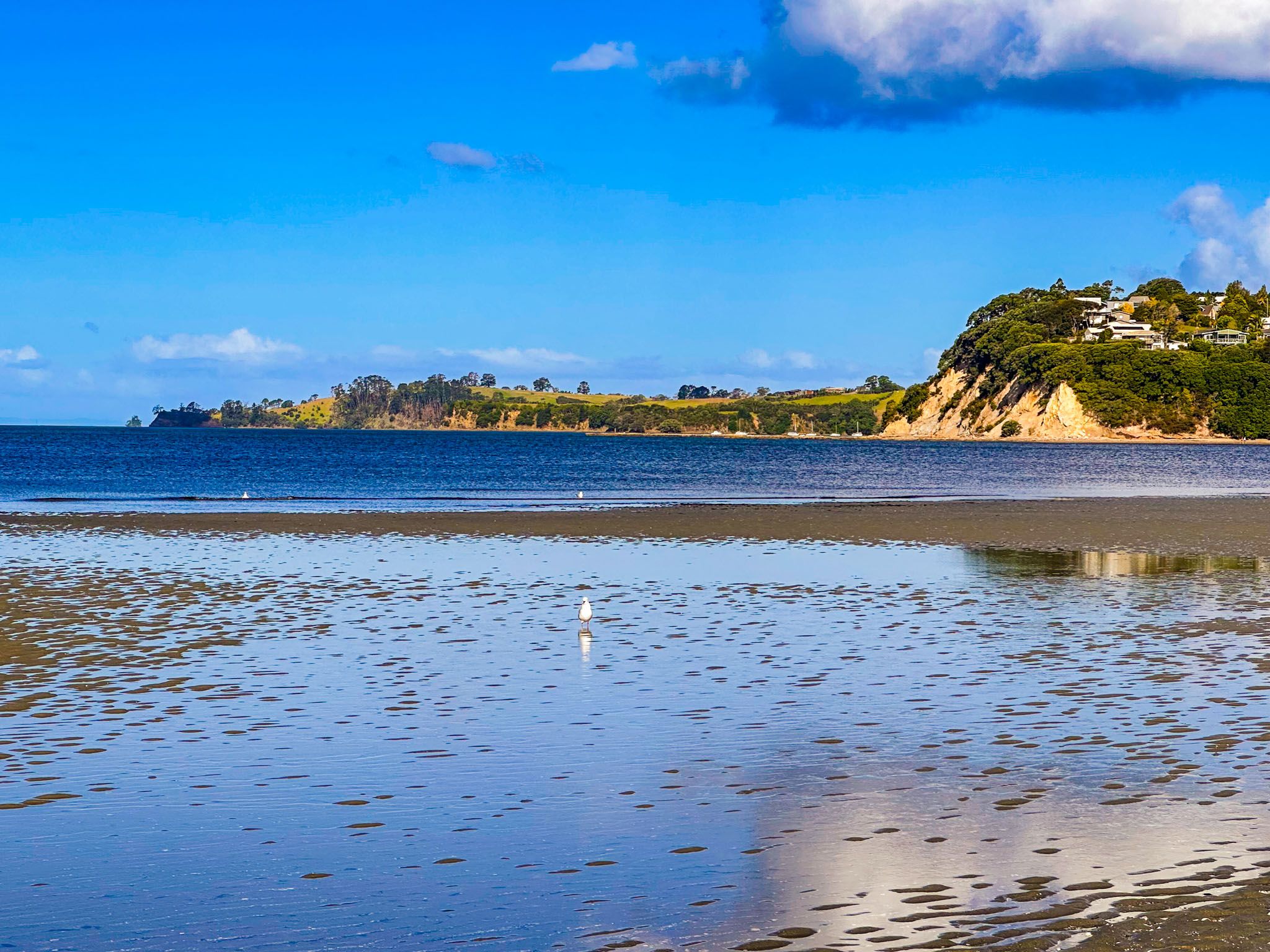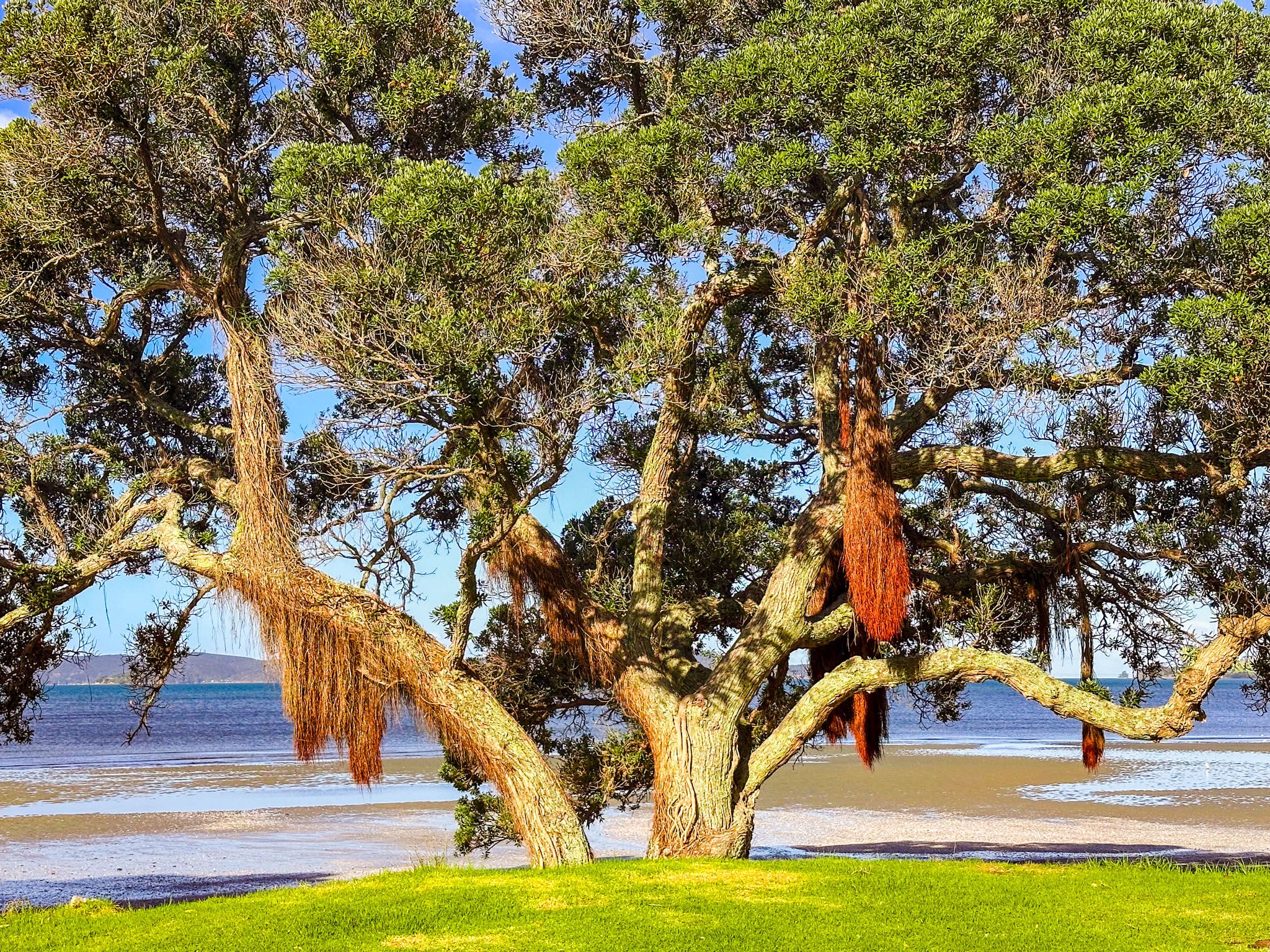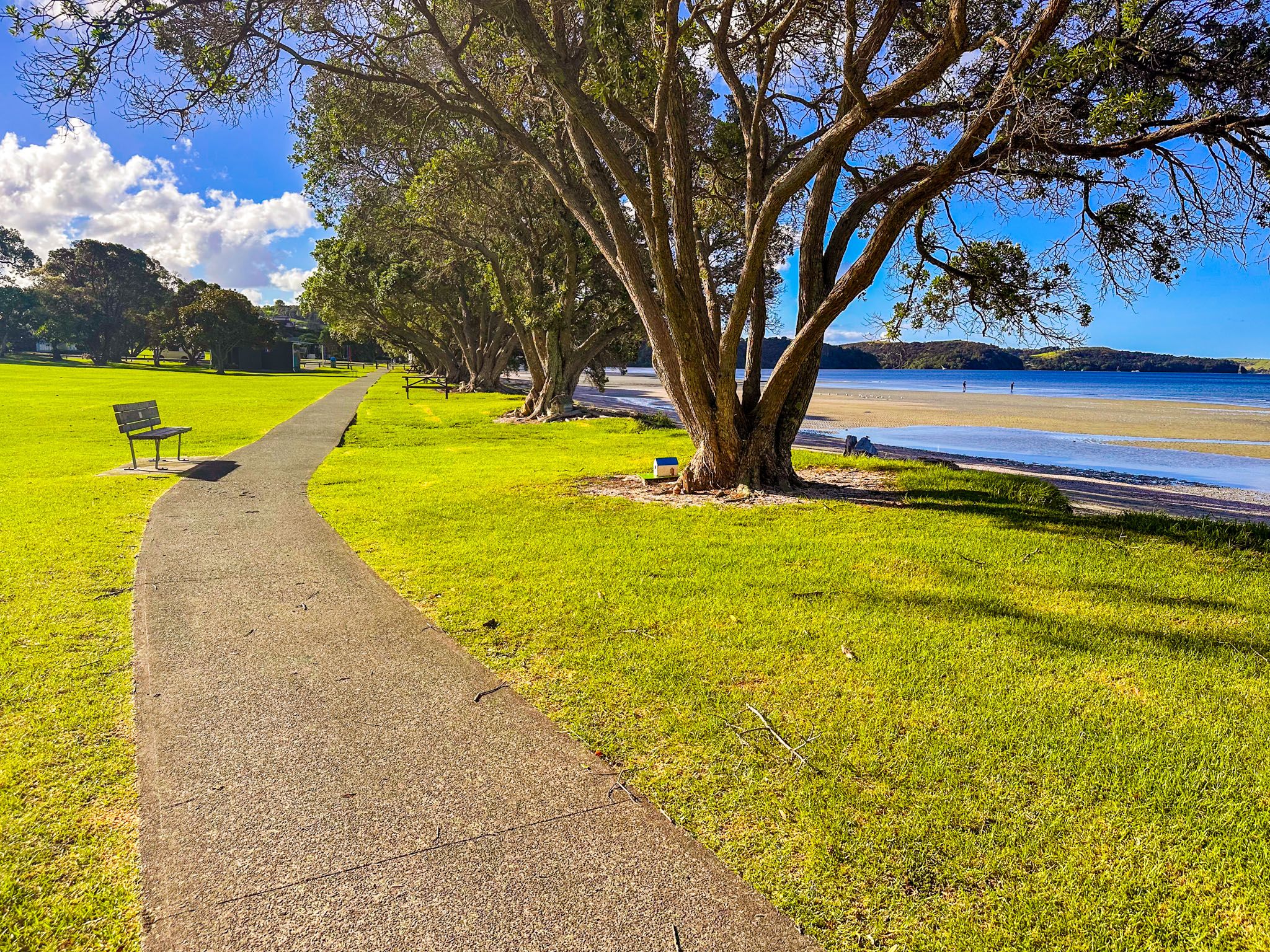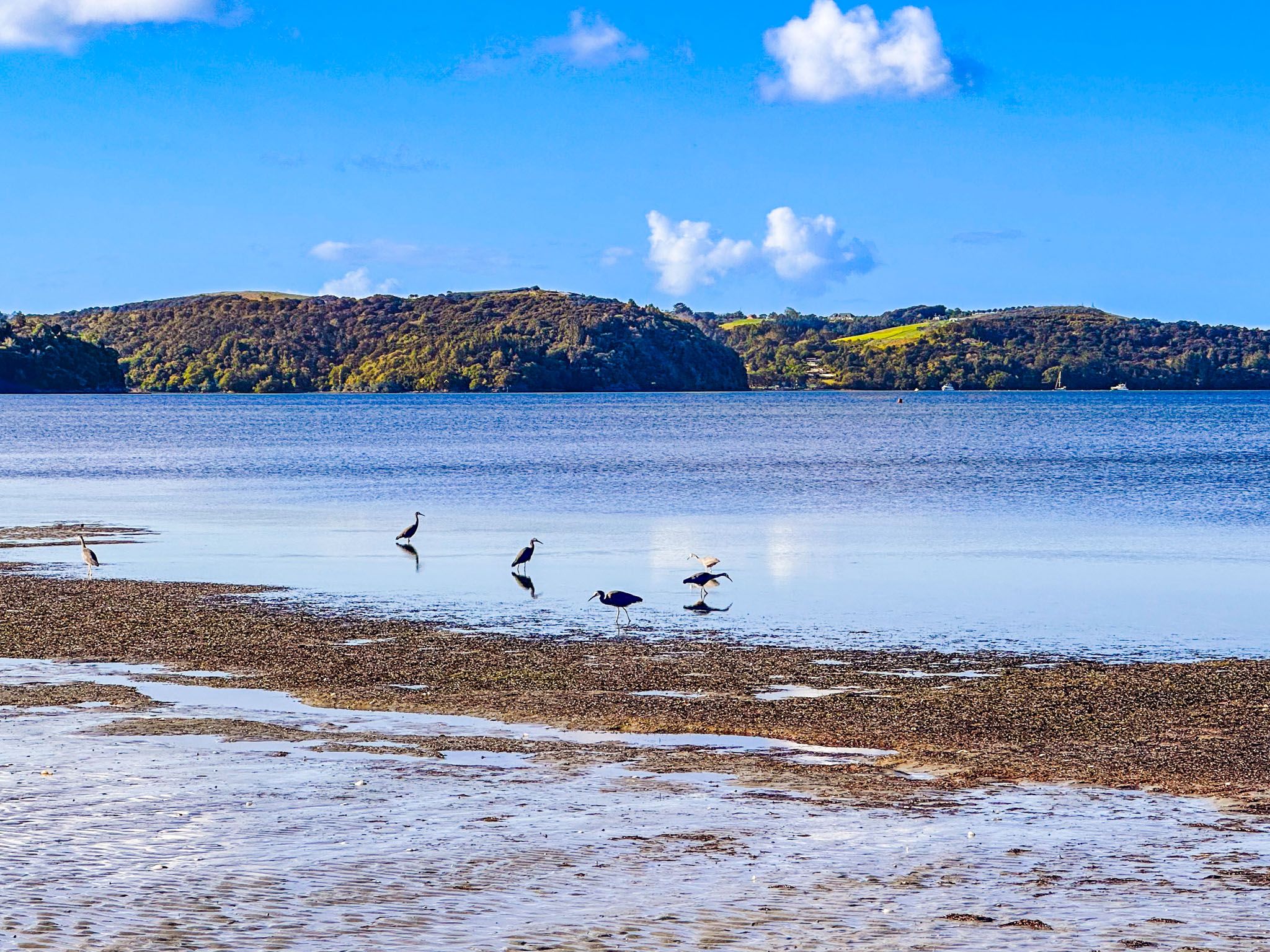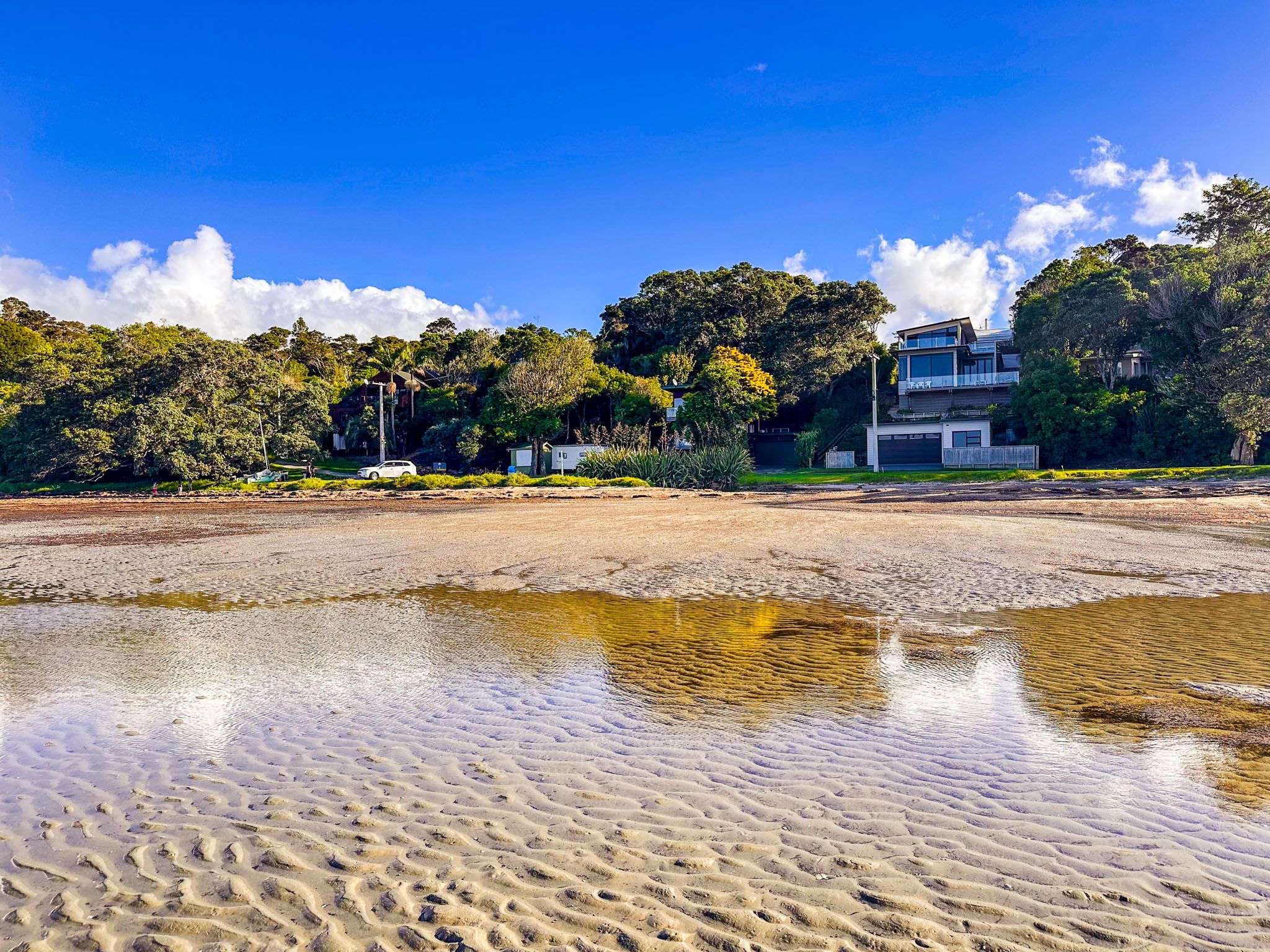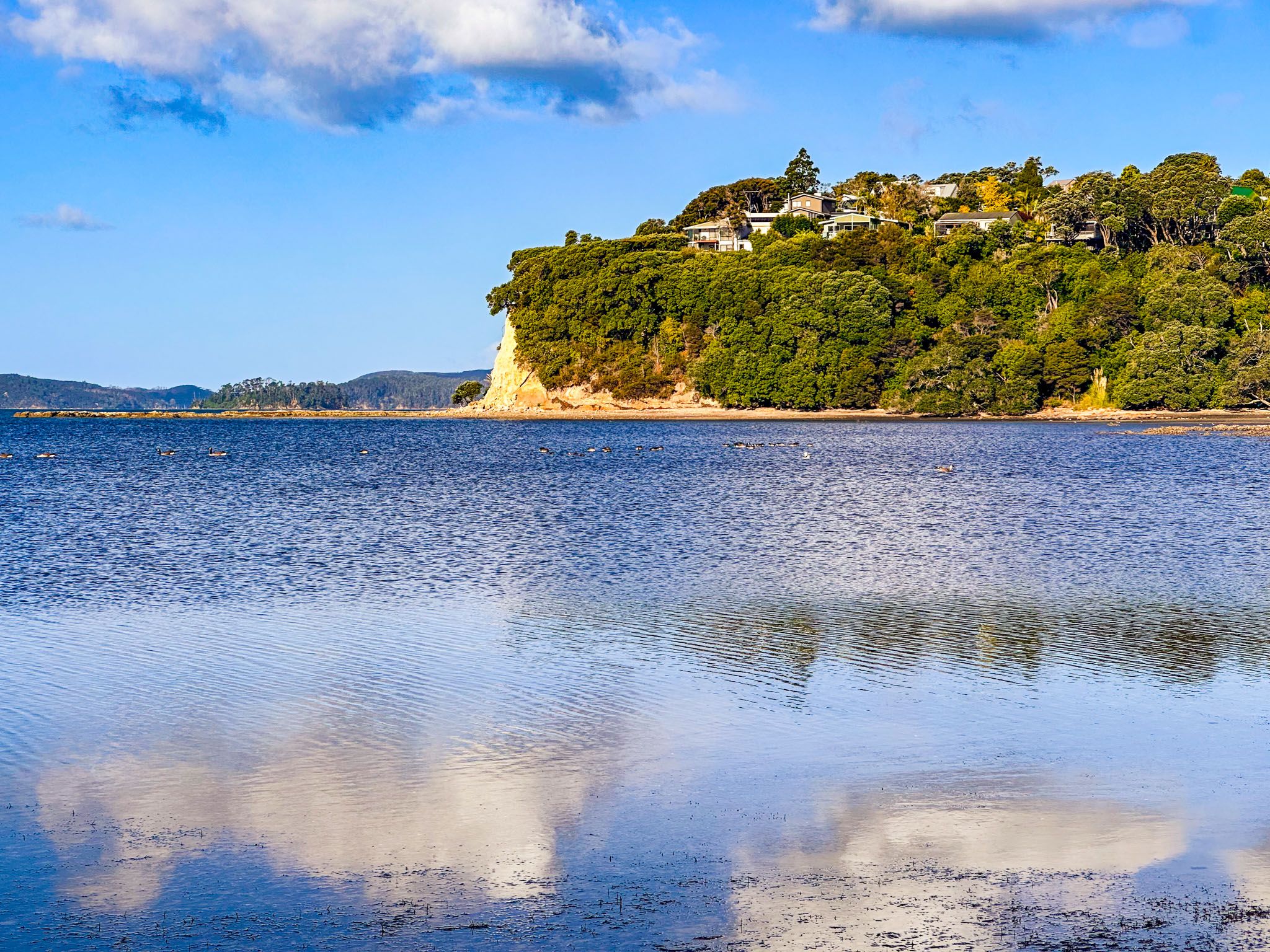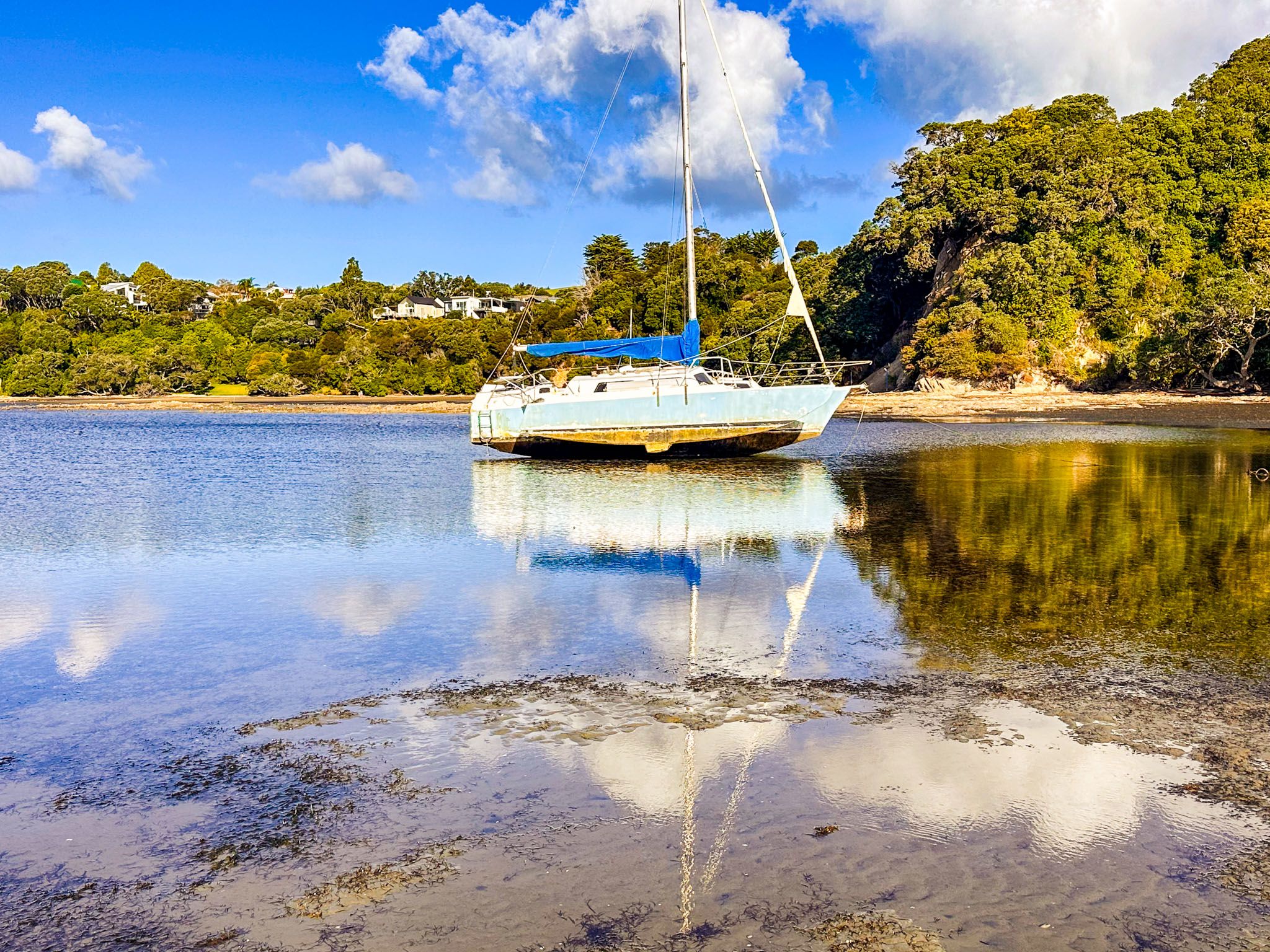Snells Beach is a beach town on the Mahurangi Peninsula, part of the Matakana Coast in the Auckland region. The town’s beach faces east across Kawau Bay towards Kawau Island. The drive to Snells Beach takes 10 minutes from Warkworth on Sandspit Road, then Mahurangi East Road. The town sits on a narrow section of the peninsula, between Sandspit and Algies Bay. With 4,000 people, it is large enough to have a shopping centre.
The beach is one of the longest on the Matakana Coast, at 3 km. It is also very flat, and the tide goes out a considerable distance. It is safe for swimming, and high tide is the best time. Much of the beach is backed by a substantial grassy reserve with playgrounds and a shared track that runs the entire length. Pōhutukawa trees are planted along the edge of the beach. The reserve is also home to various mature exotics. The vast shallows of the beach also support extensive seagrass meadows, which protect the beach from erosion and provide a food source that attracts various seabirds.
As you enter the town, the first access road to the beach is Arabella Lane, which is also signposted for Brick Bay. Continue past the Brick Bay entrance and through the roundabout to Kokihi Lane and the north end of the beach. A freedom camping area is located at the end of the road, near the beach. The other options include Tamatea Drive, Ariki Drive, Snells Beach Road, and Dalton Road, at the beach's southern end.
The Mahurangi region has been settled since at least the 13th century, linked to the arrival of the ocean-going waka, Te Arawa, Tainui, and Māhuhu-ki-te-rangi. Over time, the area was populated by hapū linked to Kawerau iwi that primarily settled along the shores of the Hauraki Gulf, moving between different kāinga according to the seasonal availability of resources. Snells Beach and Algies Bay were guarded by headland pā at the north and south ends of Kawau Bay. Moanauriuri in the bay was an important shark fishery, control over which was disputed at times between the local hapū and Hauraki-based iwi from the Marutūāhu confederation, particularly Ngāti Pāoa.
In the early 1820s, during the Musket Wars, the Mahurangi hapū were attacked by Ngāpuhi, based in Northland. The local hapū abandoned the region but reestablished themselves in the 1830s and 1840s. During this period of upheaval, the new government acquired the land around the area as part of the enormous Mahurangi Purchase in 1841. But this purchase was problematic as the vendors were not the local hapū. Protests and court disputes followed, and substantial restitution was subsequently made to local hapū. By the mid-1850s, the situation was sufficiently settled to permit sales to European settlers on the peninsula.
Early Europeans referred to the area as Long Beach. In 1854, it was purchased by Cornish miner James Snell, who had initially settled on Kawau Island. The family farmed the area for several generations before the town developed.
In 1904, kauri gum was discovered at Snells Beach, leading to an extraction industry on the beach for a short time. Despite this, the beach was a popular holiday destination, enhanced in the 1930s with the addition of Mahurangi East Road along the peninsula.
It remained limited to holiday homes until the first block of shops in Snells Beach was built in 1982. Since then, it has developed the look and feel of a typical coastal Auckland Suburb.
